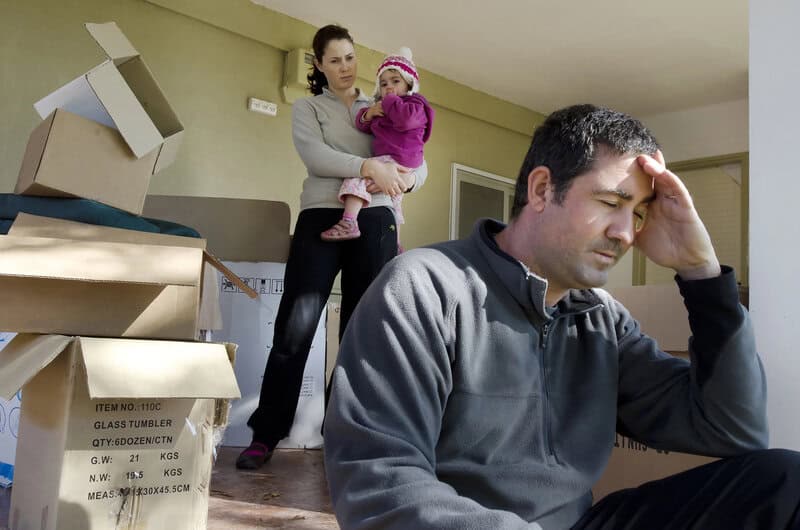After getting divorced, it’s understandable to be somewhat wary or nervous about embarking on another marriage or committed, lifetime partnership. Nobody wants to go through a divorce again, and yet many single adults are deeply desiring of a connected and committed partnership.
So, how can you move forward in a relationship and make plans for a marriage that’s unbreakable?

Proactive Steps Help Second Marriages Beat the Statistics
We could assume that second and third marriages would be more successful than first marriages, but they’re not. While current divorce statistics for first marriages are about 43% to 52%, divorce rates for second and third marriages are significantly higher than that, at 67% to 73%.
There are several reasons for this, which include:
- Not doing personal and identity work before remarrying.
- Failing to emotionally process and repair the emotional landscape or negative family dynamics that remain from the previous divorce(s).
- It’s a rebound relationship, and you’re jumping into marriage too fast.
- The inability to work with or stay outside of the existing dynamics in your new partner’s family.
- Realizing that ultimately, you miss the marriage or family that you had before.
Fortunately, there are things that you can do right now to ensure your next marriage can weather life’s inevitable storms and remain unbreakable.
1. Work with a high-quality therapist individually and as a couple
Personal growth, effective communication skills, emotional processing, and having courageous conversations are all essential to maintaining a thriving partnership. Respect for each other’s individuality is also crucial. Learn how to celebrate and honor differences, rather than let them divide you.
We all have blind spots, and these are a leading factor in divorces. Investing in a high-quality therapist can be integral to ensuring you’ve done a complete job of working through your previous divorce(s) and breakups so that you’re ready to enter a new partnership with a more solid and self-aware foundation.
Seeing someone together is also a wise step because the therapist may ask questions or present potential future conflicts that you might not have thought about otherwise. With their guidance and facilitation, you and your partner can work through these things and see whether marriage is the right next step for both of you.
2. Take your time (especially if there are minor children in the mix)
Yes, you deserve love, happiness, partnership, etc. However, minor children are already rocked from the previous divorce and a divided family. So, as challenging as it can be for you individually, their safety, security, and emotional well-being must always come first. Take your time when it comes to dating, committing to a new partner, and remarrying.
This doesn’t mean you cannot remarry if your children don’t agree with the choice or claim to “hate” your new partner, but it does require moving slowly, communicating with them, and taking your time to foster a trusting relationship with your new partner before you move in together or get married. Your therapist can support this process as well. This may include having sessions with your ex to ensure they can agree to not sabotage your new relationship (which is detrimental to your children’s well-being).
3. Prioritize your co-parenting agreement (making collaborative changes if needed)
Hopefully you have an established co-parenting plan in place. If so, review it. Sometimes what worked – or what was agreed upon – during or immediately after a divorce doesn’t make as much sense or may need to change if you’re planning to remarry.
Just as it was created, any changes have to be cooperatively discussed and decided upon between you and your ex-spouse. This can be tricky, particularly if your ex is touchy about your new partner or plans to move in/remarry. Becuase these agreements are ultimately governed by the courts (especially in terms of custody/visitation) it may be wise to enlist the help of a family law mediator who can support you both in creating agreements that are most in alignment with what the court would ultimately decide.
4. Create an estate plan that reflects your new wishes
It’s also a good idea to meet with a family law professional or estate plan attorney to talk about what makes the most sense for you financially with a new spouse in the picture. This is always important, but especially so if you have children and are blending your family.
Depending on the balance of wealth or assets, you may also want to consider a prenuptial agreement (although an estate plan may be able to play a similar role). This process of discussing financial plans for the future, what would happen to assets if one or the other of you dies, or if you were to divorce are all important conversations that ensure you’re on the same page before you say your official vows.
5. Cultivate your communication and repair skills
Hopefully, if you’ve take time to heal and grow after your first divorce, and you’re committed to taking accountability and changing unhealthy habits, you’ve also strengthened your communication skills. It’s easy to communicate well when things are going well, and not so easy when you’re in the midst of conflict. However, in addition to using healthy communication skills, the most strong and successful couples also cultivate solid relationship repair skills for after an argument – especially when you’re at a complete impasse. Conflicts will arise, and not all are 100% resovable, but your commitment to one another – and repairing the rifts – are what will ultimately make your next marriage unbreakable.
Schedule Pre-Marriage Legal Counseling With Gerard A. Falzone
The Law Offices of Gerard Falzone are dedicated to helping Bay Area couples forge strong, unbreakable marriages and stable family foundations. Our pre-marital legal counseling sessions can help you and your partner go over some of the legal and financial considerations inherent in a second or third marriage that may not arise in your daily conversations.
Contact us to schedule your introductory session; it’s a healthy first step in fostering a solid, healthy, lifetime partnership.

 There are many reasons couples may choose – or need – to live together during a divorce. Sharing the next during a divorce requires clear communication, boundaries, and agreements – especially
There are many reasons couples may choose – or need – to live together during a divorce. Sharing the next during a divorce requires clear communication, boundaries, and agreements – especially  Spousal support, also known as alimony, is one of the least understood aspects of a divorce. Unlike child support, which is always a given and straightforward calculation based on joint parent income, spousal support is more complicated.
Spousal support, also known as alimony, is one of the least understood aspects of a divorce. Unlike child support, which is always a given and straightforward calculation based on joint parent income, spousal support is more complicated.  First and foremost, any relocation that takes a child away from their regular school district or outside of a reasonable distance/commute from a co-parent who has child custody or visitation rights is against the law. However, the situation can get sticky if there’s no child custody or visitation agreement in place.
First and foremost, any relocation that takes a child away from their regular school district or outside of a reasonable distance/commute from a co-parent who has child custody or visitation rights is against the law. However, the situation can get sticky if there’s no child custody or visitation agreement in place.  Divorce visitation agreements are legally binding. Each parent is accountable for those documents. Both parents must agree upon any variation, including relocating with their kids after the divorce.
Divorce visitation agreements are legally binding. Each parent is accountable for those documents. Both parents must agree upon any variation, including relocating with their kids after the divorce. Annulments differ from divorces because they terminate and erase the legal marriage contract. An annulment determines that the marriage was never legally valid, so it doesn’t exist in the legal record.
Annulments differ from divorces because they terminate and erase the legal marriage contract. An annulment determines that the marriage was never legally valid, so it doesn’t exist in the legal record. 
 Most people think about child custody and visitation schedules as every other weekend, alternating holidays, or the division of school vacation times. However, there is another version of the child custody agreement where one parent has sole physical custody of a child while the other parent is granted supervised visits.
Most people think about child custody and visitation schedules as every other weekend, alternating holidays, or the division of school vacation times. However, there is another version of the child custody agreement where one parent has sole physical custody of a child while the other parent is granted supervised visits.
 Co-parenting is never easy and is particularly challenging during and after a heated divorce. However, your children are innocent victims, and experts are unwaveringly clear that healthy co-parenting is the key to protecting your children’s mental and emotional well-being.
Co-parenting is never easy and is particularly challenging during and after a heated divorce. However, your children are innocent victims, and experts are unwaveringly clear that healthy co-parenting is the key to protecting your children’s mental and emotional well-being.